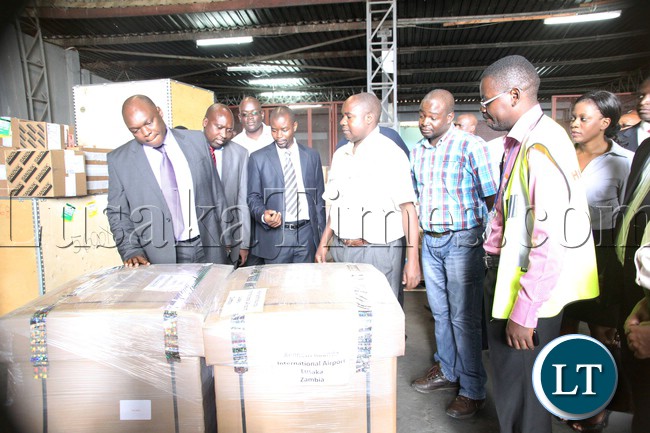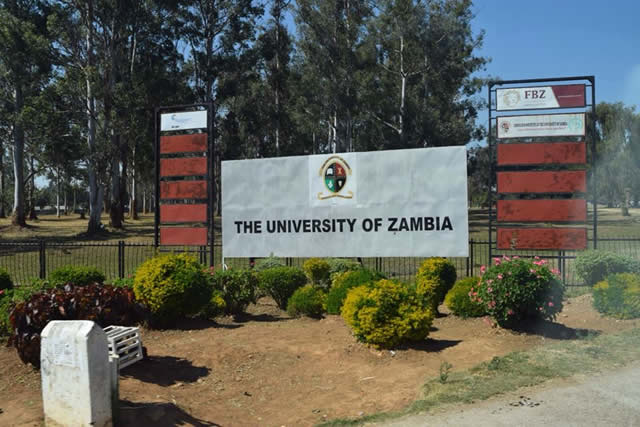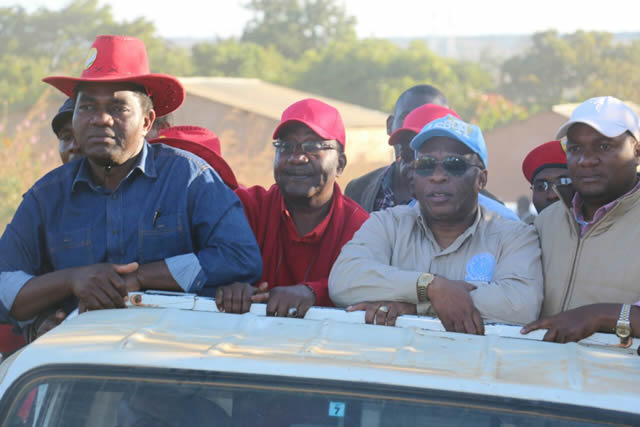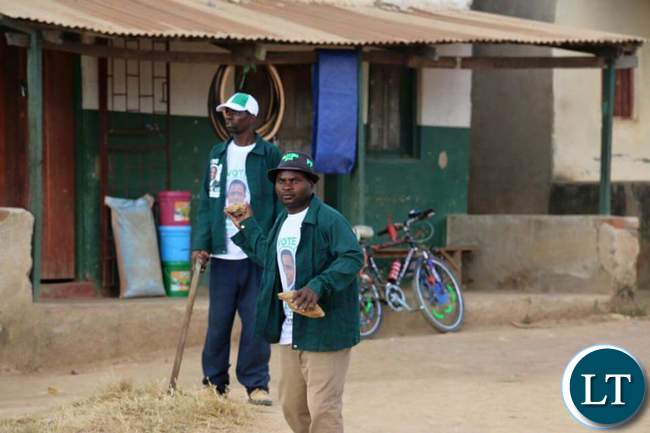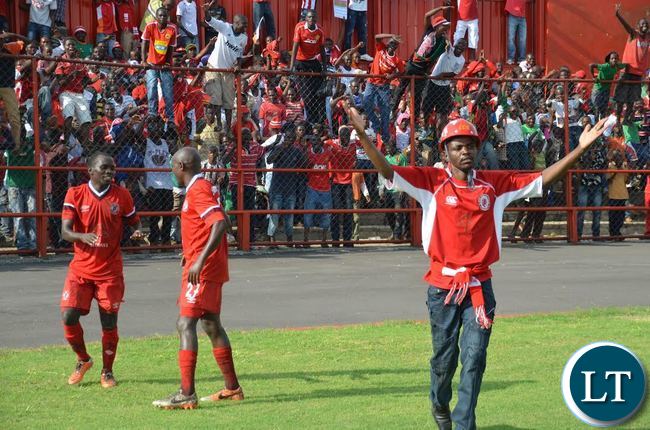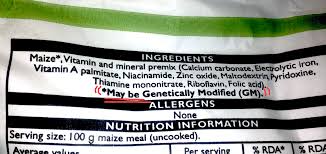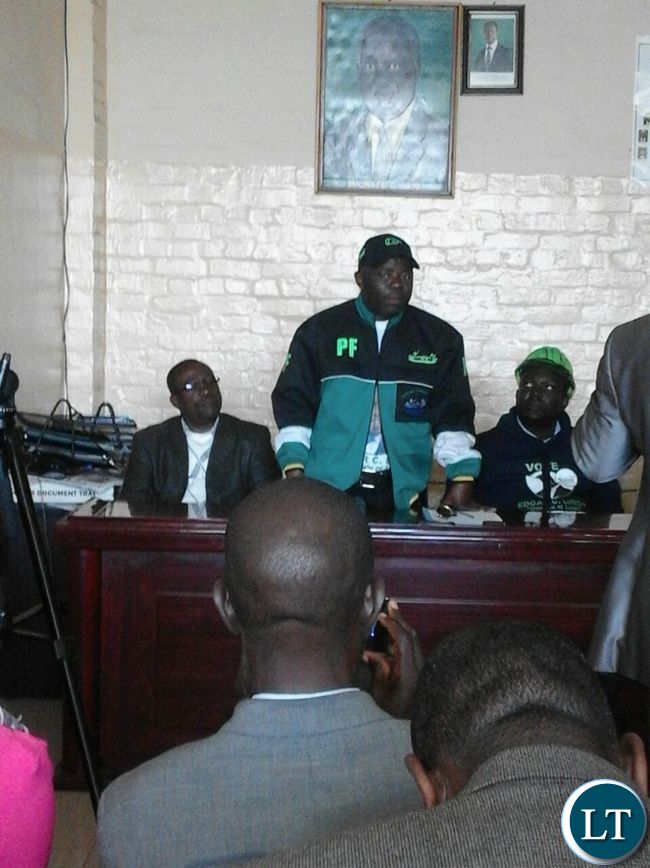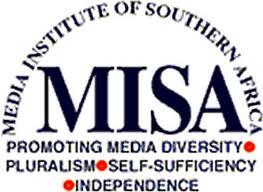(Note to readers: Comments that relate to the article and economic management are very welcome. The media is meant to inform, entertain and educate. This article is not news but an analysis and is meant for education purposes ,thus the length. I hope readers who complain about the length of my articles now know the difference.)
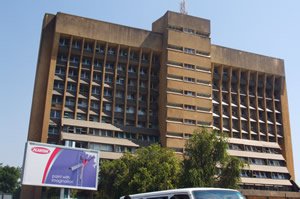
By Kalima Nkonde
The various Political Parties have presented their manifestos as part of their campaigns for the August, 2016 election but none has emphasized on how Zambia’s economy can be turned around in the short term by a strategy anchored on domestic revenue generation (DRG).In my view, the “how” in the short term, of the many plans that political parties have put forward, lies in the mobilization of domestic revenue. This article is meant to advise whoever wins the August, 2016 election to serious consider my DRG strategy outlined here and built on it.
There is no doubt that for Zambia to start recovering economically, the number one priority should be putting in place practical measures for the mobilization of domestic revenue in order to stem the budget deficit and excessive borrowing. The budget deficit is the mother of all our economic problems! Its reduction can be done by implementing two broad measures which are the reduction in government expenditure and increasing domestic revenue. It has been agreed by experts, commentators, the IMF, the World Bank that Zambia has been reckless in government expenditure, fiscally indiscipline and has not been innovative in how to generate domestic revenue. The need for the reduction in government expenditure has been agreed upon by all stakeholders. But nobody has laid out a strategy on how to raise domestic revenue so as to stop the excessive borrowing and reduce the budget deficit.
Zambia’s excessive borrowing worrisome
They are so many experts both Zambians and non Zambians who have condemned the rate of borrowing by the Zambian government to finance both recurrent and capital expenditure. But no political party is talking about it on the campaign trail and how they will address the problem. The Former Bank of Governor Dr. Caleb Fundanga in an interview with the Post Newspaper during the 51st African Development Bank annual meetings in Lusaka said the rate of Zambia’s debt contraction was worrisome.
“Of course, when you don’t have income, you reduce on expenditure; you can’t go on spending money which you do not have. But you have seen over the four years, the government has borrowed a lot of money through issuance of Eurobonds to finance these huge projects…… thus leading to a situation where our level of indebtedness has increased very fast over a very short period of time………but the rate of increase in a very short period of time which is often worrisome,”, he emphasized.
The former Finance Minister in the MMD government , Dr. Situmbeko Musokotwane has also added his voice to the dangers of excessive borrowing to fund infrastructure and social programmes in an interview on Muvi TV on 27 May,2016.
“The way to provide for education, the way to provide for health, the way to provide for water is not just by going to borrow all over the world! Government needs to focus on things that can be done internally because that is under their control”, he said.
The President of African Development Bank, Dr. Akinwumi Adesina speaking during the opening of 2016 AfDB Annual meeting on 24 may, 2016 in Lusaka advised African Government to look for finance internally. He was commenting on the challenges facing African Countries like Zambia in repaying foreign denominated debt due to high interest costs and the depreciation of local currencies.
“There is need for urgent measures to ensure macroeconomic stabilization, fiscal consolidation, broadening tax base and deepening of domestic capital markets. African countries should look inward and mobilize domestic resources for development; there should be better ways to scrutinize remittances which reached US$62billion in 2014- an amount that exceeds official development assistance,” Dr. Adesina said.
Domestic revenue mobilization
There has not been a vigorous debate on the need for Zambia to aggressively address the issue of raising domestic revenue so as to reduce the budget deficit and slow down on debt contraction! Zambia cannot continue on the current borrowing binge path. There is urgent need for internal revenue generation measures.
Two Scandinavian ambassadors to Zambia – Norway and Finland – have recently advised the Zambian government to collect more domestic revenue rather than depend on foreign borrowings and donor grants as there is Donor fatigue especially where a country like Zambia is simply mismanaging its economy.
Outlining the reasons for closing the Zambian embassy, the Norwegian ambassador, Arve Ofstad noted that they would not want to continue funding a country that is not committed to use its domestic resources.
“ We feel that when a country doesn’t make use of its own resources, it’s not doing well enough in terms of public resource management, in terms of distributional policies, then we should leave. And there was also the feeling that the anti corruption fight has been going very much up and down.” He said
The Finnish ambassador on the other hand added, “ Opportunities are there for the Zambian Government to be able to increase its own domestic revenue from tourists, researchers and academia among others.”
This article is premised on the observations by local and foreign experts as outlined above and to which the writer agrees with entirely. In order to put Zambia’s domestic revenue generation into perceptive, Zambia’s Tax revenue to GDP ratio averages about 18%, it is lower than South Africa at 25.5% and 26.8 % in Norway! It means the country can actually do better. Zambia should target Tax revenue to GDP ratio of between 22% – 25% .The short term solution lies in restructuring the revenue service – ZRA – and reviewing the tax system with a view to target high value tax generating corporations like Multinationals rather than the small Zambian businesses as more revenue could be collected from such institution which could make the difference.
ZRA restructuring
The restructuring of the Zambia Revenue Authority should be the starting point in how Zambia can mobilize domestic revenue through maximization of tax collection. This can be done through formal and comprehensive restructuring of ZRA by embarking on overhauling the current operating business model , implementing more tax reforms and improvement tax compliance.
The key to improved revenue collection lies in the employment of a combination of strategies anchored on increased resource allocation to ZRA, managerial reforms at ZRA, public education, employment of highly skilled staff, implementing efficient information technology systems, broadening the tax base, tackling tax avoidance and evasion especially through transfer pricing and combating illicit schemes of foreign currency remittance by multinationals.
The latest Panama papers about the widespread tax evasion, just goes to show the extent to which wealthy individuals, big business and multinationals can go, to avoid paying their fair share of taxes. It also goes without saying that in order for Zambia to minimize tax evasion by the big boys, the country needs a well resourced, efficient, independent, sophisticated revenue service, in the name of Zambia Revenue Authority (ZRA); which it is not at the moment. As part of the restructuring programme, Zambia Revenue Service (ZRA) should be strengthened through building its capacity and restoring its independence from political interference. The establishment of a tax avoidance and evasion task force to ensure that revenue leakages arising from smuggling, foreign trade under invoicing, transit goods and transfer pricing is plugged. The ZRA should not be used to settle political scores by targeting political opponents and tax light weights like the Post Newspaper or those not favorable to government.
The ZRA should be supported by providing it with adequate funding for infrastructural and technological development and operations. ZRA has proved to be an effective tax collector and exceeded its targets in most of the time since it was formed, but it is inadequately funded to enable it enforce legislation and administrative procedures. The institution can do ten times better with a proper restructuring programme.
The restructuring and reforms programme should also include the recruitment of sufficiently qualified and skilled manpower. ZRA should also revamp its communication strategy by enhanced communication and transparency on tax information .There should be more money allocated to enable ZRA to engage in the continuous public education of tax payers. ZRA should disseminate information so that tax payers are aware of their obligations and associated penalties so as to increase the level of tax payer compliance.
The key to the success of reforms of any tax system is the establishing of a key link between the payment of taxes and the delivery of services. As people see services improving, their support for the tax system should also increase. The tax payer needs to know how their tax dollars are being utilized. The experience of countries like South Africa and Lagos State in Nigeria have shown that if tax payers are educated about the benefits of paying tax, such as the improved road infrastructure, free health care and free education, they will comply.
Management Reforms
In order for tax reforms to be successful, it will be important to make management changes at ZRA. There will be need to carry out a management audit at the institution with a view to make necessary changes and bringing in new blood in order to ensure a change of operational culture. There will also be need to recruit high quality and incorruptible staff. The recruitment of highly skilled Tax Consultants with international experience who can team up with local consultants to oversee the transformation programme is an absolute necessity.
Excessive tax incentives to investors
The Government should also revisit the over generous and excessive tax incentives, concessions and exemptions to the mining industry and other foreign investors as these have eroded the country’s tax base and represent serious revenue leakages. There should be a proper cost benefit analysis as it is apparent that some of incentives have been abused and not beneficial to the country at all! There is no doubt that some tax incentives have outlived their usefulness. They incentives were made twenty years ago and should be revisited and be comparable to our neighbours as some of them are just an over kill and not adding any value but simply losing the country money.
Broadening tax base including the informal sector
There is a need to seriously look at broadening the tax base . At the moment, ZRA has no capacity of broadening the tax base due to insufficient and skilled manpower as well as due to political interference. There should be a stop of political interference in ZRA operations. These can bring in billions of kwacha!
One of the measures that can be implemented in broadening the tax base is by ensuring that the informal sector is included so as to make our tax system becomes more equitable and is perceived as fair and not discriminatory as it is now where those in formal employment pay 55% of tax revenue and the informal sector pay nothing but still get the services! In order to overcome the challenges of the cost of collection of taxes from the informal sector, there is just need for innovation. ZRA can for example outsource the collection of informal sector taxes to Council, business associations or membership associations’ representative bodies at fee. This will be a win – win situation as the fee will be a source of revenue for the sub contractors and ZRA will minimize its collection costs. This initiative can also be a source of employment as association bodies will employ extra staff.
Tax arrears and Mining VAT
There is also need for ZRA to put in place a deliberate strategy with dealing with tax arrears or tax debt due to non compliance by tax payer’s .The VAT refund administration needs to be revisited as over 90% of refunds go the mines! There is no doubt that the current regime is being abused and fraudulent claims cannot be ruled out where shell subsidiary companies are used for the importation of over inflated equipment to claim VAT and capital allowances. The Government should consider completely exempting the Mines from VAT rather than classifying them under the Zero rating VAT regime. The reasoning for exempting mines from VAT is that, by definition, copper is meant for export so there is no need for any incentive for Zero rating copper exports. This incentive should be for the promotion of non traditional exports!
Re-designate Mining Tax Unit (MTU) as Mining and Transfer Pricing Unit (MTPU)
The establishment of the Mining Tax Unit by ZRA (MTU ) was a step in the right direction but it should be renamed to explicitly cover transfer pricing so that other multinational corporation are also monitored with regard to transfer pricing. In order to make it effective, the unit should be manned by highly skilled personnel with experience in mining and transfer pricing schemes of multinationals .There is need to built capacity in the Unit for it to be effective as mining operations and transfer pricing schemes is complex.
There is no doubt that the mining sector has not been paying its fair of taxes and have been involved in sophisticated tax avoidance schemes using highly skilled accountants and lawyers. They are mines that have been here for over twenty years and they have never paid any income tax as they declare tax losses all the time! If shareholders had not paid dividends for twenty years, these mines would have long closed! The Finance Minister, Mr. Alexander Chikwanda alluded to this fact in his 2015 Budget speech to Parliament.
“ Sir, despite Zambia being endowed with vast mineral resources, the country has not realized maximum benefits from the sector’s potential to support growth and enhanced social economic development. The House may wish to note further that the contribution of the mining sector revenue as percentage of GDP remains low at 4%. Further, provisions on capital allowances and carry forward of losses eliminated potential taxable profits. Mr. Speaker, the tax structure was simply illusory as only two mining companies were paying company income tax.”
The reason why mines have been getting away with “ murder” is that Zambia does not have highly skilled mining tax experts. The solution lies in employing skilled experts especially in transfer pricing to deal with base erosion and profit shifting. The experts should be incorruptible. The specialists in the Mining and Transfer pricing Unit could either be Zambians or foreigners as long as the are able to perform. Zambia can attract tax experts in the Unit if we are prepared to pay them well. The benefit will certainly be higher than the cost.
South Africa and Lagos state as benchmarks
The issues of restructuring the ZRA and comprehensive tax reforms to increase our domestic revenue to narrow the deficit and stem domestic borrowing is not rocket science nor theory. Other countries have done it but you need leadership at the very top who understand and are passionate about the reforms. The top leadership should be nationalistic incorruptible and understand the short and long term benefits. The leadership has to be firm to make the tough decisions and ensure implementation of the measures are made without summersaulting after the slightest complaint, for political expediency. I would like to refer readers to two successful bench marks in Africa who successfully implemented their Revenue Services restructuring: South Africa and Lagos State in Nigeria.
The African National Congress (ANC) on taking over in 1994 was faced with a mammoth task of meeting the demands of the black population. The Mandela/Mbeki administration restructured the Apartheid era revenue service and formed South Africa Revenue Service (SARS) in 1997 which brought in massive revenue to meet social and development needs. The majority of South Africa’s infrastructure development is funded from government revenue and not foreign borrowings as is the case in Zambia in recent years.
In 2014, SARS underwent another restructuring which helped them achieve the revenue target of R1 trillion. SARS commissioner Tom Moyane said that restructuring was responsible for the revenue service reaching its highest revenue target to date. SARs collected more than R1 trillion in taxes during the 2015/2016 fiscal year.
The Lagos State of Nigeria, with a population of 21 million which is 6million more than the whole of Zambia at 15million, embarked on Tax reforms resulting in increasing revenue collection from $3.6 million dollars per month in 2005 to $46million in 2007 and $1billion in 2011 per year. These achievements were thanks to visionary leadership of Governor Bola Ahmed Tinubu who run the state from 1999 to 2007 and Governor Babatunde Raji Fashola who run the State from 2007 to 2015. The two leaders changed the face of the State by reforming the Lagos State internal Revenue service(LIRS) with the help of local Nigerian Consultants and transformed the State by collecting revenue even from the informal sector and cleaned up the State Capital Lagos.
According Diane de Gramont, a non resident research analyst for Carnegie Endowment for International Peace, in her 2015 paper entitled “Governing Lagos: Unlocking the Politics of Reform”, tax reforms have changed the face of Lagos.
“In fifteen years, Lagos has gone from being a symbol of urban disorder to a widely cited example of effective African governance. The Lagos State government has succeeded in multiplying its tax revenues and using these resources to restore basic infrastructure and expand public services and law enforcement. Extensive field research indicates that reform commitment in Lagos was driven by electoral pressures as well as elite ambitions to construct an orderly and prosperous megacity.”
Conclusion
The writer believes that the restructuring of ZRA and carrying out Tax reforms, is the sort of project that cooperating partners will be able to support and fund . The benefits of restructuring ZRA and implementing tax reforms far outweigh the costs and this has been proven by other countries. ZRA should also consider attaching some key ZRA staff to other revenue agencies such as SARS in South Africa, Inland Revenue in the United Kingdom, Internal Revenue Service in US and those of Scandinavian countries so that they can learn how they operate and copy some of the best tax administration practices. The solution is simple, you cannot develop based on borrowing.
There is no doubt that the suggestions I have proposed can work, do work and have worked in other countries. I have demonstrated it with South Africa and Nigeria. The reforms, however, require strong and visionary leadership to implement them and to make the tough decisions. The social programmes in health, education, sanitation, community development can be done by domestic revenue generation strategies. Free health care and education is possible with innovation in revenue generation. Nobody should be under any illusion that my proposal will come cheap. The restructuring of ZRA will require a lot of money but it will be money well spent as the investment made in such a project will yield immediate benefits. How I wish some borrowed Eurobonds had been spent on ZRA restructuring and tax reforms!
The writer is a Chartered Accountant by profession and a financial management expert. He is an independent and non partisan commentator/analyst. He has lived in the diaspora in England, South Africa and Botswana for over 25 years before returning home two years ago.
